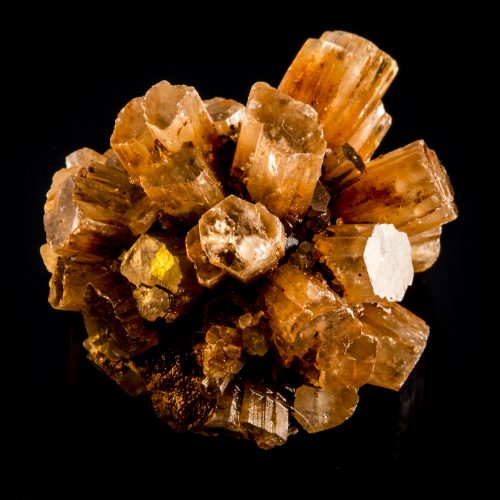
Aragonite is a naturally occurring crystal form of calcium carbonate and is a precipitate from salt and freshwater conditions. One form of aragonite occurs naturally in most mollusks. Crystallizing from calcium carbonate into orthorhombic translucent microscopic platelets and cemented by conchiolin, aragonite forms the nacre of most of the gems we refer to as pearls. This includes both natural and cultured pearls as well as the mother-of-pearl lining of hard-shelled mollusks.
Aragonite is also found in crystal form, usually white, yellow, brown, green, blue, red, violet or colorless.
Gemological Information for Aragonite
| Color: | Transparent to Opaque, Colorless and Most Other Colors in Light Tones |
| Crystal Structure: | Orthorhombic |
| Refractive Index: | 1.53 to 1.685 |
| Durability: | Fair to Poor |
| Hardness: | 3.5 - 4 |
| Family: | |
| Similar Stones: | Calcite |
| Treatments: | |
| Country of Origin: | U.S., England, Italy, Spain, Austria, Bolivia, Czech Republic |
Aragonite Care
| Ultrasonic Cleaning: | Never |
| Steam Cleaning: | Never |
| Warm Soapy Water: | Usually Safe, Avoid Acids |
| Chemical Attack: | Attacked and Effervesces to Certain Acids |
| Light Sensitivity: | Natural Colors Stable |
| Heat Sensitivity: | Decrepitates at Higher Temps Converting to Calcite |
Sources
- Gem Reference Guide, Los Angeles: Gemological Institute of America, 1988. Pp. 15-16.
- Schumann, Walter. Gemstones of the World, New York: Sterling Publishing, Co., 1977. Pp. 210.